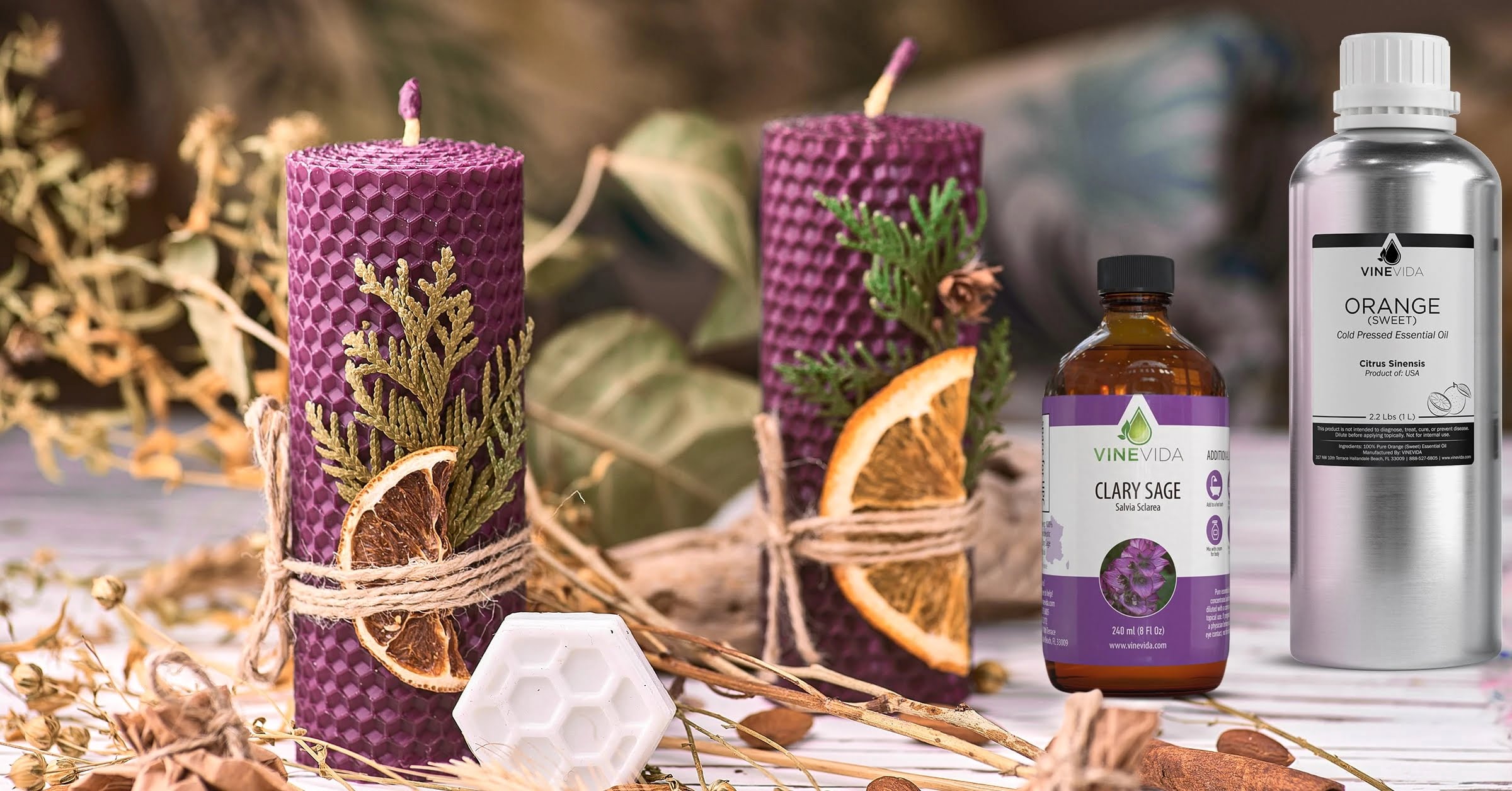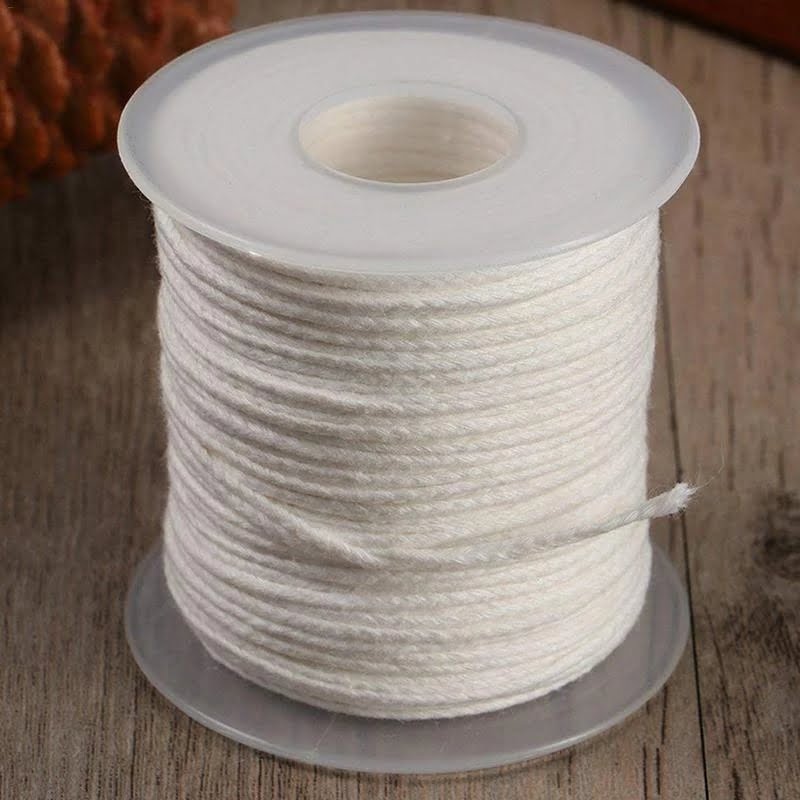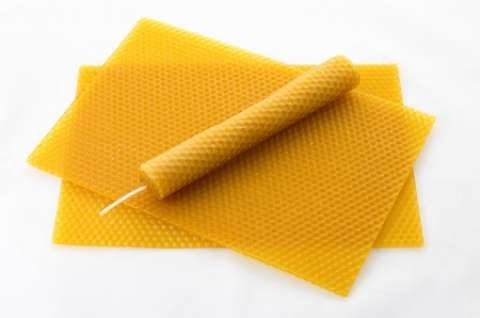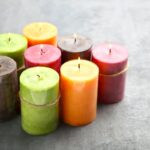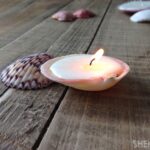Candle making is not just a craft or a pastime activity; it can be an incredibly exciting and rewarding hobby that ignites your creativity and brings a sense of relaxation and accomplishment. In this article, we will explore the world of candle making and provide you with everything you need to know to get started on this journey.
Whether you’re looking for a new hobby, a way to express your artistic side, or even thinking about starting a small business, candle making can be the perfect choice. Not only does it offer endless possibilities for creativity through various colors, scents, and designs, but it also provides a therapeutic experience as you immerse yourself in the peaceful process of creating something beautiful from scratch.
To begin your candle-making adventure, you’ll need a few essential items. Firstly, wax is the core ingredient in any candle. You can choose from different types such as soy wax, beeswax, or paraffin wax, each with its advantages and characteristics. Additionally, investing in some key tools and equipment like molds, thermometers, and wick holders will ensure that your candles turn out just the way you envision them.
In the following sections of this article, we will dive deeper into choosing the right wax for your needs, understanding fragrance selection and adding color to your candles. And as we move along, we will also cover important aspects such as selecting wicks for optimal burning performance and safety measures to handle wax properly. So let’s embark on this fascinating journey together as we delve into the art of candle making.
Choosing the Right Wax
Choosing the right wax is an important factor when it comes to making candles. There are several different types of wax available, each with its own unique properties and benefits. Understanding these differences can help you achieve the desired results in your candle making process.
One of the most common types of wax used in candle making is paraffin wax. Paraffin wax is derived from petroleum and is known for its affordability and ease of use. It has a high melting point, which means that candles made from paraffin wax have a longer burn time compared to other types of waxes. Additionally, paraffin wax can hold a high fragrance load, resulting in strong-scented candles.
Another popular choice is soy wax, which is made from soybean oil. Soy wax is considered to be more environmentally friendly and sustainable than paraffin wax, as it is a renewable resource. It also has a lower melting point, which allows for faster and more even burning. Candles made from soy wax tend to have a cleaner and more natural scent throw compared to paraffin candles.
Beeswax is another option that offers various benefits. Beeswax is all-natural and has a pleasant honey-like scent when burned. It has a higher melting point than both paraffin and soy waxes, making it suitable for creating long-lasting candles. Beeswax candles also emit negative ions when burned, which can help cleanse the air in your home.
Essential Tools and Equipment for Candle Making
When it comes to candle making, having the right tools and equipment is crucial for a successful and enjoyable experience. Whether you are a beginner or an experienced candle maker, having the right supplies will help you create beautiful candles with ease. This section will cover some essential tools and equipment that every candle maker should have in their arsenal.
Candle Molds: One of the most important tools for candle making is the candle mold. These molds come in various shapes and sizes, allowing you to create unique and customized candles. You can choose from metal molds, plastic molds, or silicone molds, depending on your preference and the type of candles you want to make.
Metal molds are durable and can withstand high temperatures, while plastic molds are lightweight and easy to use. Silicone molds are flexible, making it easy to remove the finished candles without any damage.
Thermometer: Another important tool for candle making is a thermometer. Temperature plays a crucial role in candle making as it determines when to add fragrance oils, colorants, and when to pour the melted wax into the mold. There are different types of thermometers available, including digital thermometers and glass thermometers. It is essential to choose a thermometer that has a temperature range suitable for candle making and provides accurate readings.
Pouring Pitcher: A pouring pitcher is an essential tool that allows you to melt your wax safely and pour it into the mold without any spills or messes. Look for a pouring pitcher with a handle that provides better control while pouring hot wax. It can be made of stainless steel or heat-resistant glass.
| Tool/Equipment | Description |
|---|---|
| Candle Molds | Available in metal, plastic, and silicone molds for creating customized candles. |
| Thermometer | Used to measure the temperature of melted wax for accurate fragrance and colorant addition. |
| Pouring Pitcher | A container with a handle designed for safely melting and pouring hot wax into molds. |
The Power of Fragrance
When it comes to candle making, selecting the right fragrance is crucial in creating a high-quality and appealing product. The power of fragrance goes beyond the aesthetic appeal of candles; it has the ability to evoke emotions, create ambiance, and bring back cherished memories. In this section, we will explore the importance of selecting high-quality candle scents and provide tips for choosing the perfect fragrance for your candles.
High-quality candle scents are essential in ensuring that your candles emit a strong and long-lasting aroma. When shopping for candle fragrances, it is important to look for scents that are specifically formulated for candle making. These fragrances are designed to withstand the heat of the burning wax and maintain their scent throughout the entire burn time of the candle.
Another important factor to consider when selecting candle scents is the quality of ingredients used. Opting for fragrances made from natural ingredients, such as essential oils or plant-based extracts, can result in a more authentic and aromatic scent. These natural fragrances not only provide a pleasing aroma but also offer therapeutic benefits through aromatherapy.
To help you choose the perfect fragrance for your candles, consider the following tips:
- Consider your target audience: Think about who you are making these candles for and what their preferences might be. Different scents evoke different emotions and memories, so understanding your target audience can help you select a fragrance that resonates with them.
- Test before committing: Before purchasing a large quantity of a particular fragrance, test it in small batches first. This allows you to evaluate its scent throw (how far the fragrance can travel) and performance in different types of wax.
- Experiment with combinations: Don’t be afraid to mix different fragrances together to create unique blends. This can add complexity and depth to your candles, making them even more enticing.
| Tips for Selecting High-Quality Candle Scents |
|---|
| Consider your target audience |
| Test before committing |
| Experiment with combinations |
Adding Color and Creativity
When it comes to candle making, adding color is an essential step in creating vibrant and visually appealing candles. Not only does color enhance the overall aesthetic of your candles but it also allows you to express your creativity and personalize your creations. There are various dye options available that can help you achieve the perfect hue for your candles.
One popular option for coloring candles is liquid dyes. These dyes are highly concentrated and often come in a wide range of colors, making it easy to achieve any shade you desire.
Liquid dyes are typically added to melted wax in small quantities, allowing you to gradually build up the desired color intensity. It’s important to note that liquid dyes can sometimes affect the quality of the candle’s burn if used in excess, so it’s crucial to follow the recommended guidelines and experiment with different amounts.
Another dye option for vibrant candles is dye chips or blocks. Similar to liquid dyes, these dye chips come in various colors and offer an easy way to add color during the melting process. Dye chips are solid pigments that can be added directly into the wax as it melts, allowing for easy customization. It’s important to stir the melted wax thoroughly when using dye chips to ensure even distribution of color throughout the candle.
For those looking for natural alternatives, plant-based dyes such as powdered herbs or spices can be used as well. These options not only add color but also impart a subtle fragrance to your candles. Popular choices include turmeric for yellow shades, beetroot powder for pink tones, and spirulina powder for green hues. Keep in mind that natural dyes may require experimentation as their colors can vary depending on factors such as concentration and type of wax used.
All About Wicks
When it comes to candle making, the choice of wick plays a critical role in the overall performance and success of your candles. The wick is responsible for carrying the heat from the flame to melt the wax, ensuring a steady and even burn. It also determines factors such as fragrance throw, burn time, and flame height. With so many options available, finding the perfect wick for your candle can be a bit overwhelming.
Understanding Wick Types
There are several types of wicks to choose from, each with its own characteristics and suitability for different types of candles. The most common types include cotton wicks, wood wicks, and zinc-core wicks. Cotton wicks are most widely used due to their affordability, versatility, and clean burning. They come in various sizes and styles to suit different candle sizes and compositions.
Wood wicks add an aesthetic touch to candles with their crackling sound reminiscent of a fireplace. They work best in larger-sized candles or those made with soy or coconut wax. Zinc-core wicks are primarily used in container candles as they provide stability and help prevent mushrooming.
Considerations for Wick Selection
Choosing the right wick involves considering factors such as candle size, wax type, fragrance load, colorants used, and desired burn time. For small container candles or tealights, a smaller-sized cotton or zinc-core wick may be suitable to ensure a controlled flame height that won’t produce excessive heat or smoke.
On the other hand, larger pillar candles may require thicker or multiple cotton wicks to ensure enough heat is generated to melt the wax pool completely during burning. Additionally, if you are using highly fragranced or colored wax, it is important to select a more robust wick that can withstand potential obstructions created by these additives.
Testing Your Wicks
It’s crucial to conduct wick testing before finalizing your candle production. Burning test candles with different wick sizes and types will help you determine the proper wick for optimal performance in terms of an even burn, minimal soot, and a pleasing flame height. Be sure to observe factors such as carbon buildup, excessive smoking, or tunneling during the testing process, as these can indicate that the chosen wick is not suitable for your specific candle composition.
Keep records of your testing to refer back to when starting new batches or making adjustments to existing candle formulations. Overall, finding the perfect wick takes patience and experimentation, but it is a crucial step in achieving high-quality and consistent candles every time.
Safety First
Candle making can be a fun and rewarding hobby, but it’s important to prioritize safety in order to avoid accidents and ensure a successful candle-making experience. Properly handling wax is crucial to prevent injuries and maintain a safe environment. Here are some tips for safely working with wax and avoiding common accidents.
Wax Handling Safety
One of the most important aspects of candle making is ensuring that you handle the wax properly. Here are some safety tips to keep in mind:
- Use heat-resistant equipment: When melting wax, make sure to use heat-resistant containers such as double boilers or dedicated candle making pitchers. Avoid using plastic or glass containers that aren’t specifically designed for candle making as they may crack or shatter.
- Use caution when melting wax: Always melt wax over low to medium heat and never leave it unattended. Use a thermometer to monitor the temperature and prevent overheating, which can lead to fires or burns.
- Watch out for flammable materials: Keep flammable materials, such as paper towels or fabric, away from the melting area. These materials can easily catch fire when in contact with hot wax.
Fire Safety Precautions
Fire safety should always be a top priority when working with open flames and hot melted wax. Here are some precautions you should follow:
- Work in a well-ventilated area: Make sure your workspace is well-ventilated to prevent the build-up of fumes from the melting wax, especially if you’re using dyes or fragrance oils.
- Keep a fire extinguisher nearby: Have a fire extinguisher readily available in case of emergencies. Familiarize yourself with how to use it properly beforehand.
- Be cautious with open flames: If you’re using candles or tea lights as heat sources for melting wax, place them on stable surfaces far away from flammable objects like curtains or loose papers.
- Never leave melting wax unattended: Always stay in the vicinity of your working area and never leave melting wax unattended. In case of any unforeseen circumstances, you always want to be present to take necessary action.
By following these safety tips, you can minimize the risk of accidents and enjoy a safe candle-making experience. Remember that prevention is key, so always prioritize safety when handling wax and working with open flames.
Step-by-Step Candle Making Process
When it comes to candle making, following a step-by-step process is crucial for a successful outcome. Whether you’re a beginner or an experienced crafter looking to refine your skills, understanding the process from melting wax to adding final touches is essential. This section will provide a beginner’s guide to the candle making process, ensuring you have the basic knowledge and skills to create beautiful homemade candles.
The first step in the candle making process is melting the wax. There are several methods for melting wax, including using a double boiler or a microwave. If using a double boiler, fill the bottom pot with water and place it on the stove over low heat.
Then, place the wax in the top pot and allow it to melt slowly and evenly. If using a microwave, place the wax in a microwave-safe container and heat it in short intervals until completely melted. It’s important to note that different types of wax have different melting points, so be sure to refer to the instructions provided by the manufacturer.
Once the wax is melted, it’s time to add fragrance and color. Start by determining how much fragrance oil or essential oil you want to use based on your personal preference and the size of your candle container. Carefully stir in the fragrance oil into the melted wax until well combined.
For adding color, there are various options available such as liquid dyes, dye chips, or powdered pigments specifically formulated for candles. Begin by adding small amounts of colorant at a time until reaching your desired shade, stirring well between each addition.
After adding fragrance and color, it’s time to prepare your chosen vessel or mold. Ensure that they are clean and dry before pouring in the melted wax mixture.
To hold your wick upright while pouring in hot wax, consider using specialized tools such as wick holders or clothespins attached across the top of your container. Once everything is prepared, slowly pour the melted wax into your vessel or mold, making sure to leave enough space at the top for the wick and any final decorative touches.
By following this step-by-step guide, you’ve successfully gone from melting wax to pouring it into your chosen vessel. The next steps in the candle making process include allowing the wax to cool and solidify, trimming the wick, and adding any final decorative elements. These steps will be covered in later sections of this article to ensure you gain a comprehensive understanding of the entire candle making process.
Troubleshooting Common Candle Making Problems
Uneven Burning: Causes and Solutions
One common problem that candle makers encounter is uneven burning. This occurs when the wax burns unevenly, resulting in one side of the candle melting faster than the other. There are several factors that can contribute to this issue, including a misaligned wick, improper container size, and an uneven distribution of fragrance or dye in the wax.
To solve this problem, it is essential to ensure that the wick is centered and straight in the candle. Use a wick centering device or a small stick to keep the wick properly aligned during the pouring process. Additionally, choosing the right container size for your candle is crucial.
If the container is too wide or deep for the amount of wax used, it can cause uneven burning. To avoid this, select containers that are appropriate for your chosen wax amount.
Another consideration is the distribution of fragrance and dye in the wax. Uneven distribution can lead to variations in how quickly certain areas of the candle burn. To prevent this issue, make sure to thoroughly mix fragrance oils and dyes into your melted wax before pouring it into your mold or container.
Sinking Centers: Causes and Solutions
Sinking centers occur when a depression forms in the middle of a candle after it has cooled and solidified. This can be frustrating for candle makers who want their candles to have a smooth surface and even texture. The most common cause of sinking centers is shrinkage during cooling.
To prevent sinking centers, consider pouring your wax at a slightly higher temperature than usual. This will help reduce shrinkage as it cools down. Additionally, using additives such as stearin or vybar can help minimize shrinkage and create more stable candles.
Another factor to consider is cooling rate. Rapid cooling can also contribute to sinking centers. To prevent this issue, allow your candles to cool gradually at room temperature. Avoid placing them in a cold environment or near a draft, as this can lead to uneven cooling and sinking centers.
Additional Tips for Troubleshooting
If you find that your candles still have burning or sinking issues despite taking the above precautions, there are a few additional troubleshooting tips you can try. Firstly, check the type of wax you are using. Some waxes are more prone to burning unevenly or developing sinking centers than others. Consider experimenting with different types of wax to see if that makes a difference.
Another tip is to adjust the size and type of wick you are using. Sometimes, a wick that is too small or large for your candle can result in burning problems. Consult a wick size chart or seek advice from experienced candle makers to determine the best wick for your specific candle size and composition.
Lastly, keep detailed records of your candle-making process, including measurements and temperatures used. This will help you identify patterns and troubleshoot any recurring issues more effectively.
By understanding the causes of uneven burning and sinking centers and implementing these solutions, candle makers can overcome common problems and create high-quality candles with consistent burn times and visual appeal.
Next-Level Candle Making
When it comes to candle making, there is no limit to the creativity and innovation you can bring to your craft. Once you have mastered the basics of candle making, you may find yourself eager to take your skills to the next level by incorporating unique designs and techniques into your candles. This section will explore some exciting ideas and methods that can elevate your candle-making game.
One popular technique in next-level candle making is layering different colored waxes to create a visually stunning effect. To achieve this, start by melting one color of wax and pouring a thin layer into your container or mold.
Allow it to cool and solidify before repeating the process with another color on top. You can repeat this layering process as many times as you like, alternating colors to create a beautiful gradient or adding contrasting colors for a bold look.
Another creative technique is embedding objects or decorations into your candles. This can be done by placing small objects, such as beads, dried flowers, or even small figurines, at the bottom of your container before pouring in the wax. As the wax sets, these objects become trapped in the candle, creating an interesting visual element. Just ensure that any items you are embedding are heat-resistant and won’t pose a safety hazard when the candle burns.
For those seeking a more intricate design challenge, consider trying out the art of carving candles. Carving allows you to sculpt unique shapes and patterns into the surface of your candles, giving them a truly artisanal touch. To carve candles, begin by selecting a softer type of wax that is easier to work with. Use specialized tools such as carving knives or heated metal tools designed for candle carving to carefully etch designs onto the surface of your candle.
Incorporating these unique designs and techniques into your candle making can help set your creations apart from commercially-made candles and showcase your artistic skills. Remember to always prioritize safety when experimenting with new methods and have fun exploring the vast possibilities that candle making has to offer.
Candle Care and Maintenance
Candle care and maintenance are important aspects of candle making and usage. By properly caring for your candles, you can maximize their burn times and ensure safe usage. Here are some tips and guidelines to follow:
Trim the Wick
Trimming the wick before each use is crucial for maintaining a clean and even burn. The ideal height for a wick is about ¼ inch. If the wick becomes too long, it can create excessive soot, smoke, and an uneven burn. Use a wick trimmer or scissors to trim the wick to the recommended length before lighting the candle.
Avoid Burning for Too Long
To prevent overheating and ensure a longer burn time, avoid burning your candles for more than 4 hours at a time. Excessive burning can cause the wax to become too hot, leading to rapid melting, uneven burning, and potential safety hazards.
Burn Candles on a Heat-Resistant Surface
Always place your candles on heat-resistant surfaces such as ceramic or glass plates, candle holders, or trays. This will prevent any damage to furniture or accidents caused by heat transfer from the base of the candle.
Extinguish Candles Safely
Do not blow out candles but instead use a snuffer or gently dip the wick into melted wax and then straighten it again before re-lighting it. Blowing out candles can cause hot wax to splatter and increase soot production.
Store Candles Properly
Store your candles in a cool, dry place away from direct sunlight or heat sources. Exposure to excessive heat can cause deformation or melting of the wax even when not in use.
By following these tips for candle care and maintenance, you can ensure that your candles burn cleanly, safely, and offer a longer burn time. Remember to always prioritize safety when handling candles and enjoy the beautiful ambiance they create in your space.
Conclusion
In conclusion, candle making offers an exciting and rewarding hobby that allows you to unleash your creativity. Whether you are a beginner or a seasoned candle maker, there is always something new to learn and explore in this art form. From choosing the right wax and fragrance to incorporating unique designs and techniques, candle making offers endless possibilities for creating beautiful and personalized candles.
By investing in essential tools and equipment such as molds, thermometers, and wicks, you can ensure that your candle making process runs smoothly. Taking safety precautions while handling wax is crucial to prevent accidents. Additionally, troubleshooting common problems like uneven burning or sinking centers will help you achieve high-quality candles consistently.
Once you have mastered the basics of candle making, don’t be afraid to take it to the next level by incorporating unique designs and techniques. From layering different colored waxes to creating marbled or swirled patterns, the possibilities for creativity are limitless.
Finally, remember that proper candle care and maintenance are important for maximizing burn times and ensuring safe usage. Trim your wicks regularly, avoid burning candles for extended periods of time, and always use them on a heat-resistant surface.
Embrace the art of candle making as a way to relax, express yourself creatively, or even start a small business. With dedication and practice, you can create candles that not only fill your space with warmth and beauty but also bring joy to those around you. So go ahead, unleash your creativity and indulge in the wonderful world of candle making.
Frequently Asked Questions
Is it worth making candles profitable?
Making candles profitable can definitely be worth it if you have a passion for candle-making and a solid business plan. Candles are a popular and versatile product that have a high demand in the market. With the right marketing strategies, quality products, and unique designs, you can build a successful candle business.
However, it is important to note that profitability depends on various factors such as competition, target market, pricing strategy, and operational costs. Conducting thorough market research and understanding consumer preferences will help you determine if starting a candle business can be profitable in your specific location or niche.
What materials do I need to start a candle business?
To start a candle business, you will need several materials to ensure smooth production processes and create high-quality candles. The primary material required is wax, which is available in various types such as soy wax, beeswax, or paraffin wax.
You will also need wicks (the core element for burning), fragrance oils or essential oils (to add scent), color dyes or pigments (for aesthetic purposes), containers or molds to shape the candles, heat-resistant equipment like double boilers or melting pots for melting the wax, thermometers to monitor temperature, pouring pitchers to pour the melted wax into containers or molds, stirring utensils like wooden spoons or spatulas, labels for branding identification on your candles, packaging materials like boxes or bags for selling the candles properly wrapped or presented to customers.
What do I need to make and sell candles?
Making and selling candles requires more than just materials; you need to have certain tools and knowledge as well. Some of the essential items include a heat source like a stove or hot plate for melting wax if not using specialized equipment mentioned earlier. Safety equipment such as gloves and goggles should also be used during handling hot wax to prevent accidents or burns.
Additionally, you will need storage space for your raw materials and finished products while ensuring they are kept away from direct sunlight and excessive heat sources that may cause damage. In terms of knowledge, learning the candle-making process and techniques, experimenting to achieve desired scents, colors, and designs, and understanding proper safety measures are crucial. Moreover, obtaining necessary licenses or permits for running a business and complying with regulations in your area is vital to ensure legal operations.

Welcome to my candle making blog! In this blog, I will be sharing my tips and tricks for making candles. I will also be sharing some of my favorite recipes.

